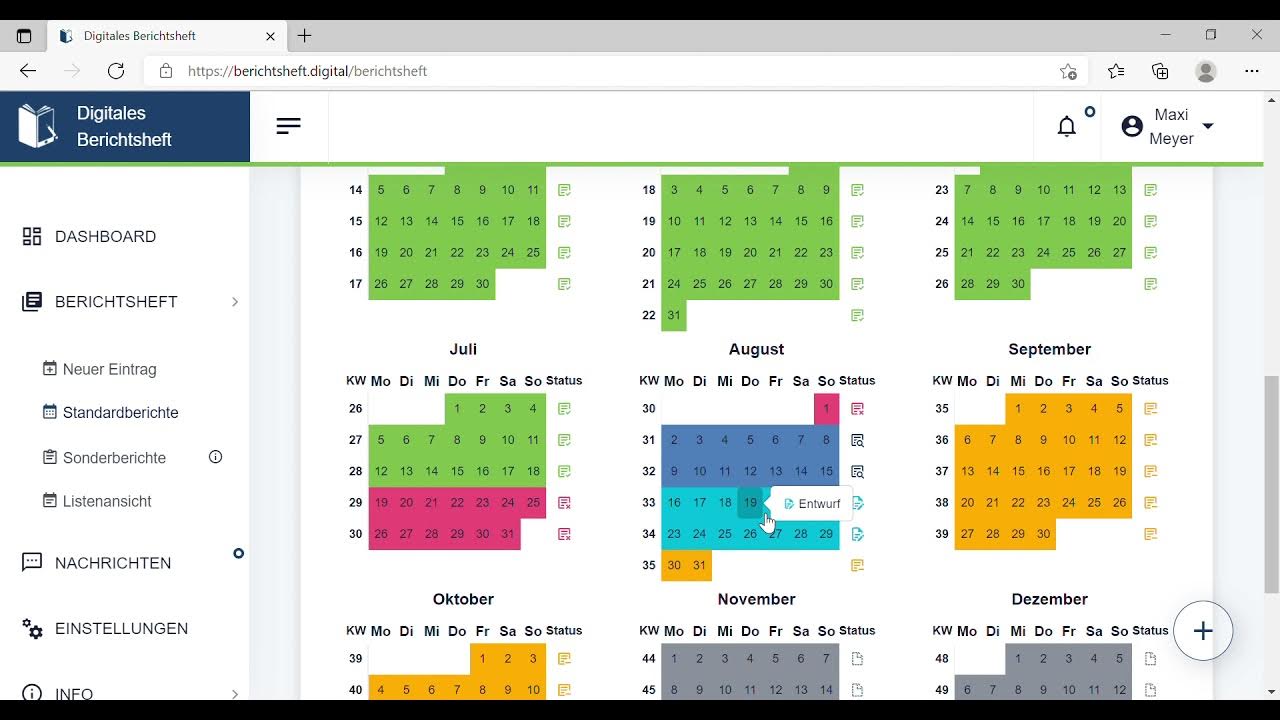The 10-to-15 rule (PARA Method) | Part 2
Summary
TLDRDieses Video führt durch die Erstellung einer Projektliste im Rahmen des PARA-Organisationsframeworks. Es geht darum, aktive Projekte zu identifizieren, sie klar zu definieren und sie in einer Liste zu erfassen. Dabei werden Methoden vorgestellt, um die Anzahl der Projekte auf 10 bis 15 zu begrenzen, um den Fokus zu gewährleisten. Zusätzlich wird erläutert, wie falsche Projekte identifiziert und aus der Liste entfernt werden, um die Effektivität zu steigern.
Takeaways
- 📝 Projekte sind Ergebnisse, die du innerhalb eines bestimmten Zeitrahmens erreichen möchtest und die einen klaren Ziel und eine Frist haben.
- 📋 Um dein Projektliste zu erstellen, beginne mit einer Ideenbeschafferung und notiere alles, woran du gerade arbeitest, ohne vorher zu bewerten, ob es ein gutes Projekt ist oder nicht.
- 🔍 Durchsuche deine E-Mails, deinen Kalender und deine To-Do-Liste, um weitere Projektideen zu finden und diese deiner Liste hinzuzufügen.
- 🔢 Folge der Regel von 10 bis 15: Halte die Anzahl deiner Projekte zwischen 10 und 15, um sicherzustellen, dass du Fortschritte machen und nicht überlastet wirst.
- 🚫 Entferne falsche Projekte wie Träume, Hobbys oder allgemeine Verantwortungsbereiche von deiner Liste, da sie keine spezifischen Ziele oder Fristen haben.
- 🏁 Trenne große Projekte in kleinere, verwaltbare Subprojekte auf, um sie realisierbarer und handhabbarer zu machen.
- 📉 Überprüfe deine Liste und identifiziere Projekte, die zu groß sind, um in der kurzen Zeit abgeschlossen zu werden, und ersetze sie durch konkretere, kurzfristige Ziele.
- 🔄 Erhalte eine dynamische Projektliste, indem du Projekte hinzufügst und andere entfernst, um stets in Bewegung zu bleiben und nie festzustecken.
- 🚀 Verwende die 10- bis 15-Regel, um sicherzustellen, dass deine Projektliste fokussiert und realistisch ist, ohne dass Träume, Hobbys oder offene Verantwortungsbereiche enthalten sind.
- 📅 Nutze deinen Kalender und To-Do-Liste, um Projekte zu identifizieren, die möglicherweise Teil eines größeren Projekts sind, und prüfe, ob sie auf deiner Liste fehlen.
- 💡 Achte darauf, dass deine Projektliste nicht nur von anderen Personen beeinflusst wird, sondern auch deine eigenen Prioritäten und Fähigkeiten widerspiegelt, um eine effektive Projektverwaltung zu gewährleisten.
Q & A
Was ist das Ziel des in dem Video vorgestellten Projektlisten-Frameworks?
-Das Ziel ist es, einen dedizierten Platz für jedes Projekt zu schaffen, indem man eine klare Liste aller aktiven Projekte erstellt, an denen man derzeit arbeitet. Dies hilft dabei, Fokus, Klarheit und Dynamik in der digitalen Notiznahme und kreativen Arbeit zu gewinnen.
Was sind die beiden Hauptmerkmale, die ein Projekt ausmachen?
-Ein Projekt muss über ein klares Ziel verfügen, das man erreichen möchte, und zweitens einen Termin oder sogar nur eine grobe Zeitlinie, bis wann das Projekt abgeschlossen sein soll.
Wie viele Projekte sollten auf der Liste maximal sein, um signifikanten Fortschritt zu erzielen?
-Maximal 15 Projekte, um sicherzustellen, dass man in jeder Woche signifikanten Fortschritt erzielen kann und die Projekte nicht aufgibt.
Was ist das Risiko, wenn man mehr als 15 Projekte auf der Liste hat?
-Das Risiko ist, dass man keine sichtbaren Fortschritte erzielt und die Überzeugung verliert, dass man die Projekte beenden kann, was dazu führen kann, dass man die Projekte aufgibt.
Welche sind die Risiken, wenn man weniger als 10 Projekte auf der Liste hat?
-Das Risiko ist, dass man bei einem Projekt feststeckt oder blockiert ist und kein anderes Projekt zur Verfügung hat, um problemlos zu wechseln, was dazu führen kann, dass die Projektliste nicht lebendig bleibt und man immer in Bewegung ist.
Was sind 'falsche Projekte' und wie identifiziert man sie?
-Falsche Projekte sind Ziele, die keine spezifische Frist oder keine klaren Ergebnisse haben, wie Träume, Hobbies und Bereiche. Man identifiziert sie, indem man sie von echten Projekten unterscheidet, die spezifische Ergebnisse und Fristen haben.
Was ist das Problem mit Megaprojekten wie das Schreiben eines Buches?
-Megaprojekte wie das Schreiben eines Buches sind zu groß und unhandlich, um sie als einzelne Projekte zu behandeln. Sie sollten in kleinere Unterprojekte aufgeteilt werden, um sie machbarer und realistischer zu machen.
Wie kann man die Anzahl der Projekte auf der Liste auf den optimalen Bereich von 10 bis 15 Projekten reduzieren?
-Man identifiziert falsche Projekte, Megaprojekte und dann reduziert man die Liste, indem man die am wenigsten dringenden Projekte auf eine zukünftige Projektnotiz verschiebt.
Was ist der Vorteil, Projekte in kleinere Unterprojekte zu unterteilen?
-Die Unterteilung in kleinere Unterprojekte macht die Projekte machbarer, erleichtert die Identifizierung der nächsten Schritte und hilft, das Gefühl der Erreichbarkeit und des Fortschritts zu erhalten.
Welche Schritte empfiehlt das Video, um eine Projektliste zu erstellen?
-Zuerst sollte man eine Liste aller aktuellen Aktivitäten erstellen, dann die E-Mails und Kalender überprüfen, um mögliche Projekte zu identifizieren. Danach sollte man die 10 bis 15 Regel anwenden, falsche Projekte identifizieren und Megaprojekte in kleinere Unterprojekte unterteilen.
Welche Rolle spielt die Definition von Projekten in der digitalen Notiznahme und kreativen Arbeit?
-Die klare Definition von Projekten ist entscheidend für Fokus, Klarheit und Impuls in der digitalen Notiznahme und kreativen Arbeit, da sie hilft, Prioritäten zu setzen, Projekte voranzutreiben und Fortschritte sichtbar zu machen.
Outlines

Dieser Bereich ist nur für Premium-Benutzer verfügbar. Bitte führen Sie ein Upgrade durch, um auf diesen Abschnitt zuzugreifen.
Upgrade durchführenMindmap

Dieser Bereich ist nur für Premium-Benutzer verfügbar. Bitte führen Sie ein Upgrade durch, um auf diesen Abschnitt zuzugreifen.
Upgrade durchführenKeywords

Dieser Bereich ist nur für Premium-Benutzer verfügbar. Bitte führen Sie ein Upgrade durch, um auf diesen Abschnitt zuzugreifen.
Upgrade durchführenHighlights

Dieser Bereich ist nur für Premium-Benutzer verfügbar. Bitte führen Sie ein Upgrade durch, um auf diesen Abschnitt zuzugreifen.
Upgrade durchführenTranscripts

Dieser Bereich ist nur für Premium-Benutzer verfügbar. Bitte führen Sie ein Upgrade durch, um auf diesen Abschnitt zuzugreifen.
Upgrade durchführenWeitere ähnliche Videos ansehen

5. Azure Infrastructure with Terraform - Creating a resource group

SYNAXON Managed Backup - Wo starte ich?

Crashkurs für Anfänger | Canva Tutorial Deutsch

Normalparabel y = x^2 - quadratische Funktionen - Grundlagen | Lehrerschmidt

01 Wie erstelle ich einen Berichtshefteintrag mit Dateianhang

Introductory Film Studies 01: Shot Composition
5.0 / 5 (0 votes)